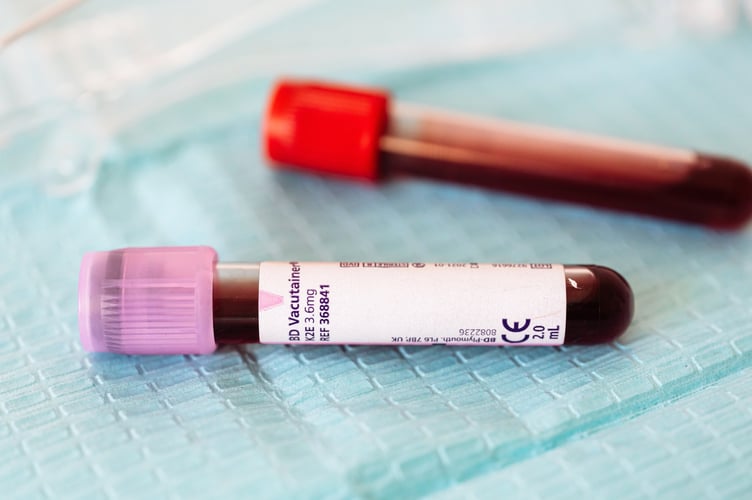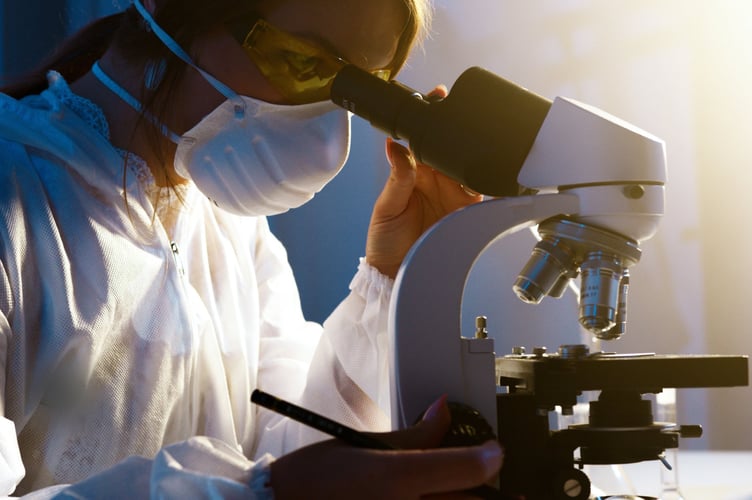Sexually transmitted infections (STIs) are on the rise in mid and north Wales among 15 to 35-year-olds, a new report has outlined, with “greater access and take up of testing” leading to the truer number of infections being recorded despite a collapse in use of walk-in sexual health clinics.
Public Health Wales’ latest annual report into sexual health shows that greater access and take up of remote STI testing has seen an increase in the number of diagnoses of STIs, with a “notable rise in diagnoses of gonorrhoea, chlamydia and syphilis.”
The report, Sexual Health in Wales Annual report 2023, shows a marked increase in tests carried out since the introduction of a postal testing service, which enables people to carry out tests in their own homes.
Data shows a marked decrease in sexual health clinic attendance following the strict lockdowns during the pandemic, Public Health Wales said, but testing was “at a 10-year high, primarily driven by the implementation of postal testing.”
Also at a 10-year high were diagnoses of chlamydia, with 9,215 across Wales – an increase of 22 per cent from the previous year. The majority of cases were women aged 15 to 24.
In the Hywel Dda Health Board area of Ceredigion, Carmarthenshire and Pembrokeshire, 575 people were diagnosed with chlamydia in 2022, a rise of more than 25 per cent from the 2013 figure, but down from the peak in 2017 of 726.
In the Betsi Cadwaladr University Health Board area, which includes Gwynedd, 1,236 were diagnosed with chlamydia in 2022 – an increase on the past two years but just below the peak of 1,445 in 2013.
In Powys, 115 people were diagnosed with chlamydia in 2022, the highest ever on record, and an almost 200 per cent increase from the 2013 figure.
“
Regular testing for STIs and HIV is essential to maintain good sexual health. This ensures that early treatment can be provided, as well as avoiding the spread of infection.
Public Health Wales
Gonorrhoea cases rocketed by 127 per cent from the previous year to 4,126 in 2022. The majority of cases were men aged 15 to 24.
In Hywel Dda, the area recorded its highest ever case numbers for gonorrhea, with 162 diagnoses made in 2022. The previous high was 76 in 2019.
Record highs for gonorrhoea were also seen in Betsi Cadwaladr, with cases reaching 505 in 2022 against a previous high of 249 in 2020.
Powys also recorded a record high of 22 in 2022. The previous high was just five in 2021.
The data shows a 14 per cent increase in syphilis cases, with 417 diagnoses made in 2022. The number is done from the peak of 433 in 2019.
The number of syphilis cases remained stable in the Hywel Dda Health Board area, with 19 recorded in 2022, a shade under the eight year average of around 20.
Syphilis cases did reach a record high in Betsi Cadwaladr, with 73 diagnoses made, up from a 10-year average of around 40. Fewer than five syphilis cases were recorded in Powys in 2022, in line with the county’s average.
Cases of genital herpes increased by 18 per cent to 1,142, but cases of genital warts continue to decline with 1,003 cases in 2022, a 69.5 per cent reduction over the last decade.
Both genital herpes and genital warts cases fell in both Hywel Dda and Betsi Cadwaladr.
Genital herpes cases fell to 62 in Hywel Dda and 198 cases in Betsi Cadwaladr, both well down from its peak in 2018.
Genital warts cases fell sharply in Hywel Dda to 70 in 2022 from a high of 366 in 2018, and in Betsi Cadwaladr where 225 cases were recorded last year against a 2013 high of 679.
No genital herpes or genital warts cases were recorded in Powys.
The report found that “chlamydia, genital herpes, and genital warts are more common in heterosexual men than gay and bisexual men,” while “gonorrhoea and syphilis are more common in gay and bisexual men than heterosexual men.”

Overall testing has risen to a 10-year high, with 96,625 people tested for chlamydia in 2022, 83,543 tested for gonorrhoea, 55,607 tested for syphilis, and 64,505 tested for HIV – despite the collapse in sexual health clinic use.
Just 496 people in Hywel Dda were tested in health clinics in 2022, compared to 6,849 just five years ago.
That pattern is replicated in the Betsi Cadwaladr Health Board area with testing numbers in clinics dropping to 3,475 in 2022 from 9,798 in 2018.
Against the drop in in person testing, 4,727 people in the Hywel Dda Health Board area were tested for STIs through the postal service in 2022, up from 3,196 in 2021- the first year the service was in operation.
7,043 were tested in the Betsi Cadwaladr Health board area in 2022, up from 4,510 in 2021. In Powys 1,188 were tested for STIs in 2022, up from 702 in 2021.
The report shows that postal testing for STIs has been “particularly popular” with the younger age groups, 15 to 24 and 25 to 34 year olds.
“It means that STI surveillance has greater sensitivity as a result,” the report adds. “The majority of cases of STIs diagnosed are in these age groups.
"Regular testing for STIs and HIV is essential to maintain good sexual health. This ensures that early treatment can be provided, as well as avoiding the spread of infection.
"Public Health Wales advises that everyone who has condomless sex with new or casual partners should get an STI screen, including an HIV test at least once a year, even if they don’t have any symptoms.”
Data shows that new HIV infections have been declining over the past ten years, with 60 new diagnoses in Wales in 2022. This number represents a 56.5 per cent reduction in diagnoses over the past decade.
HIV diagnoses in Wales are more common in white men aged 35 to 49, data shows.
“HIV testing is the route into accessing HIV pre-exposure prophylaxis (PrEP) which has been proven to reduce HIV transmission,” the report says.
“If a patient is diagnosed with HIV, treatment is free on the NHS, effective and people diagnosed promptly can expect long, healthy lives.
“Effective treatment of HIV leads to undetectable levels of virus, which also means HIV cannot be passed on through sex.”
Symptoms of STIs
Symptoms can develop within a few days or weeks, but sometimes they do not appear until months or even years later. Often there are few or no symptoms and you may not know you have an STI. If there’s any chance you have an STI, go to a sexual health clinic or GP for a free and confidential check-up.
Chlamydia
Symptoms usually appear after one to three weeks but can start much later. Symptoms include discharge from the vagina or penis, pain when peeing, vaginal bleeding between periods or after sex, pelvic pain in women, testicular pain in men. About 50 per cent of men and 70 per cent of women who are infected do not have any symptoms.
Genital herpes
Symptoms can appear after four to seven days but might not start until months or years later. Symptoms include small, painful blisters around the genitals, pain when peeing, a tingling or itching around the genitals. Most people do not have any symptoms when first infected.
Genital warts
If genital warts appear, symptoms could start from 3 weeks to many months or even years after contact with the virus that causes them. Symptoms include small, fleshy growths or bumps on the genitals or around the anus – these are usually painless, but may be itchy. Most people with the virus that causes genital warts do not develop obvious warts.
Gonorrhoea
Symptoms usually appear within two weeks of being infected but could start much later. They include green or yellow discharge from the vagina or penis, pain when peeing. About 10 per cent of men and 50 per cent of women who are infected do not have any symptoms.
Syphilis
Symptoms usually appear after two to three weeks but could start earlier or much later. They include one or more small painless sores or ulcers on the genitals, a blotchy rash and flu-like symptoms that may follow a few weeks later. Symptoms are often not obvious and may come and go.
HIV
The first symptoms may appear after two to six weeks. They can include flu-like symptoms, such as a high temperature (fever), sore throat, headaches, and achy muscles or joints, a red rash on the body. Not everyone gets these symptoms, but in people who do they usually last one to two weeks. After the symptoms disappear, you may not have any further symptoms for many years, even though the infection remains in your body.
Josie Smith, senior epidemiologist for Public Health Wales, said: “We have seen a significant increase in the uptake of postal testing for STIs in Wales amongst younger age groups, however, it is as relevant and important for older people.
“Postal testing is a free and easy-to-use method, which means that individuals can quickly access treatment as required.
“Postal testing is free of charge, and available for anyone in Wales aged 16 years and over and has proved to be highly acceptable, resulting in greater numbers of infections being identified.
“We now have a clearer picture of the numbers of STIs in Wales, and this information will help to develop services.
“We would like to take this opportunity to remind people that they can access testing, free condoms and emergency contraception through various routes in Wales.
“Testing is available through sexual health services, the online postal testing or GPs.
“Free condoms are available through the postal service or if you are aged 13 to 25 through the C Card schemes.
“You can access emergency contraception for free, even if you’re under 16, from sexual health services and most community pharmacies.”
Home postal testing kits are available from www.shwales.online
The C Card scheme can found at www.cccymru.co.uk
Testing and information about STIs can be found at 111.wales.nhs.uk
Have your say on the issues that matter to you. Get in touch today: email [email protected] or phone 01970 615000


.jpeg?width=209&height=140&crop=209:145,smart&quality=75)

